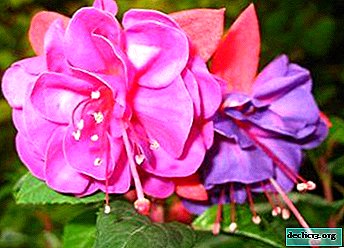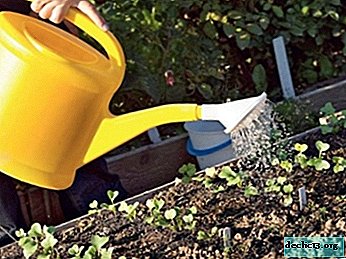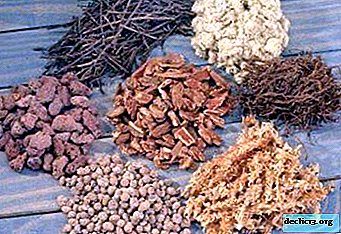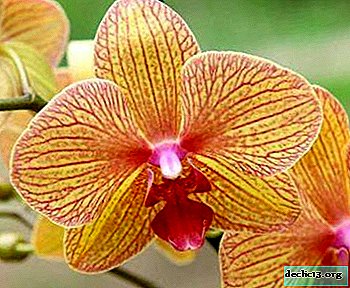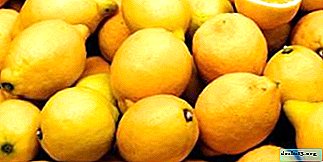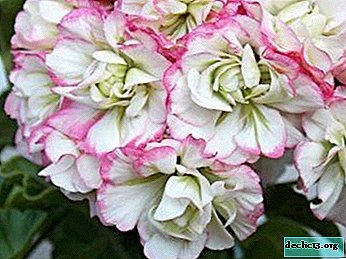Popular varieties of Antherium Scherzer and the secrets of their successful cultivation
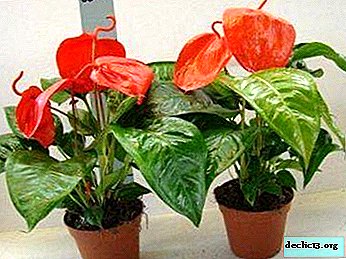
Anthurium Scherzer is one of the most beautiful flowers that can be grown at home. The plant comes from humid tropics, and therefore has several features of care.
What does this flower look like? What are the popular varieties? How exactly to care for him? How does a plant reproduce?
You will learn about this in this article. You can also see photos of this beautiful plant, which can show off on your windowsill.
Botanical Description
Scherzer Anthurium - a perennial herbaceous evergreen. It belongs to the genus Anthurium and the Aroid family. This plant is an epiphyte, that is, it can grow on other plants. The stems are short, the roots are numerous and thin. Leaves up to 1.5 centimeters long. Inflorescence is vertical. Bisexual flowers. The plant bears fruit in orange and red berries.
The birthplace of Anthurium is the countries of South America, and there this beautiful plant has several different nicknames: pig tail, flamingo and damn tongue. In Russia, this flower is called masculine happiness. It is believed that he endows his master with courage, determination and passion. Latin name Anthurium Scherzerianum.
History of occurrence
Anthurium was first seen and described in 1876 in Colombia. by the botanist Edward Andre. So it is precisely Colombia and the northern parts of Ecuador that can be considered the birthplace of Anthurium (about Anthurium Andre, which is named after the botanist, is described here). In 1889, flowers were brought to the Hawaiian Islands, on which they later became considered a symbol and a talisman.
Appearance
The stems of Anthurium Scherzer grow up to forty centimeters. It has dense, leathery leaves with a matte surface covered with small black dots. The flowers most often have a saturated red color, although other colors are possible (we talked about the varieties of anthurium with red flowers here).
A characteristic difference from other plants of the Anthurium genus is that in Scherzer, the cob is spirally twisted.Distribution area
The genus of plants Anthurium mainly grows in the tropical regions of central South America.
Popular varieties: description and photo
The Anthurium Scherzerianum has several of the plant's most beloved varieties. Among them:
Lindsey
The peculiarity of this variety is bent cob flowers resembling a bowed flamingo and a non-glossy bright red bedspread. Lindsay is less whimsical for growing a house, unlike her brothers.

Graffiti
A striking difference of this variety is a wide and dense white veil, covered with bright red dots of different sizes.

Amaretti (Amaretti)
This variety has been recently bred. The bedspreads are multi-colored, bright: red, yellow, orange and green colors mix (for varieties with orange flowers read here). Bright bracts against the background of bright green leaves give the plant exceptional decorativeness.

Mix
The mix is grown from several varieties of Scherzer planted in one container.

About the diversity of species and varieties of anthuriums we wrote in this material.
Houseplant Care
Caring for Antherium Scherzer is simple. The main thing is to remember that the plant comes from a tropical strip, which means that appropriate conditions are needed.
- Temperature. In summer, the most suitable temperature is 20-25 ° C.
Important! Anthuriums do not tolerate drafts.
- Watering. It is necessary to water anthuriums twice a week in the summer, in winter - once a week. These tropical beauties love moisture, which can be created in the following ways:
- purchase and install a humidifier;
- spray the area next to the plant with warm water;
- wrap the stems of a plant with moist sphagnum moss.
Do not pour water directly on the leaves, as this can lead to the formation of limescale.
- Shine. For anthurium, an eastern or western window is well suited, as direct exposure to sunlight can be detrimental to the plant. With the appropriate lighting, you can position the plant in the back of the room.
- Priming. The soil must be loose and breathable. A suitable one can either be purchased in stores or made by yourself. The most suitable composition is a mixture of humus, turf and leafy soil, peat and medium-grained sand in a ratio of 1: 2: 1: 1.
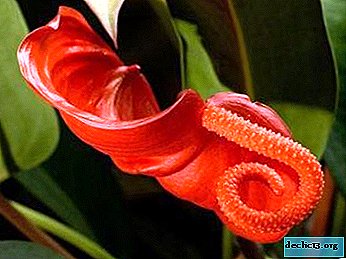 Pruning. As the anthurium grows, it is necessary to trim so that it does not lose its decorative effect.
Pruning. As the anthurium grows, it is necessary to trim so that it does not lose its decorative effect.- You should carefully inspect the plant. If it is too thick or there are dried or discolored leaves, then pruning is also necessary.
- Pruning is carried out from the top, at an angle downward, gently cutting off discolored or withered branches and leaves.
- During the healing period, spray water onto the flower.
For pruning, it's better to use a pruning shears rather than clippers.
- Top dressing. Top dressing is necessary during the growth of anthurium. Twice a month, soil should be enriched with liquid mineral fertilizers with a high content of phosphorus and potassium.
- Pot. It is better to use plastic pots rather than ceramic, as the temperature of the soil should not be lower than the ambient temperature. In size, the pot should be voluminous, since in such a capacity the anthurium will bloom longer.
- Transfer. Young plants need to be replanted every spring, but with the age of the plant this procedure can be carried out no more than once every 3-4 years.
- To begin with, you should choose a suitable pot - tall and narrow, but certainly a bit larger than the root system of the plant.
- Cover the bottom with drainage from gravel or expanded clay.
- A loose soil mixture is poured on top, on which a flower is placed by transshipment.
- The remaining space is filled with soil mixture.
- Soil mix and moisten slightly. You can optionally impose a sphagnum moss.
- It is necessary to put on a translucent bag on the plant, and then leave it in a semi-shady place for a couple of days.
- Wintering. In the autumn-winter period, the temperature must be maintained no higher than 18 ° C. Anthuriums need to be sprayed once a week with warm water. It will be more comfortable for the plant to survive the winter if it is put an additional lamp with daylight.
It should be remembered that in winter plants are not transplanted. At this time of the year, the flower does not need fertilizing. Even in winter, it is important not to forget about humidity, since heating dries the air. It would be wise to put an additional humidifier.
Breeding
At home, anthurium can be propagated by cuttings, leaf, seeds, shoot, using aerial roots. The most successful way is propagation by cuttings..
Diseases and Pests
Due to the increased humidity that anthurium needs, it is more likely than other plants to be affected by gray rot or root rot. Of the insects, aphids, scale insects, thrips, whiteflies, spider mites can be dangerous.
Irregularities in care or watering can also lead to a lack of flowering or dry leaves.Similar flowers
- Spathiphyllum is similar to Scherzer's anthurium, not only externally, but also related in its meaning: this flower symbolizes female happiness. Spathiphyllum flowers are mostly white.
- Callas are very delicate flowers, the cob of which is surrounded by a veil. Many calla lilies are associated with white, but in fact, there are much more colors.
- Variety Red Alert can compete with Shertseroy in the brightness of the red canvas.
- Calla Picasso will delight in a multi-colored color.
- Hot shot is distinguished by bright yellow flowers.
- Sayshayn - one more yellow calla. All varieties are no more than 50 centimeters in height.
Anthurium Scherzer is a beautiful houseplant, which is distinguished by a wide variety of subspecies. It pleases the eye and is very unpretentious in leaving, the most important thing is not to forget that he likes tropical humidity.

 Pruning. As the anthurium grows, it is necessary to trim so that it does not lose its decorative effect.
Pruning. As the anthurium grows, it is necessary to trim so that it does not lose its decorative effect.


